Along the rugged coastlines and beneath the ocean’s surface, a tiny, often overlooked creature clings steadfastly to its existence. These are barnacles, marine invertebrates that, despite their unassuming appearance, harbor a wealth of biological marvels and play crucial roles in marine ecosystems. Far from being mere bumps on a rock, barnacles are sophisticated crustaceans with an evolutionary history as captivating as their unique life cycle.
For anyone who has ever explored a tide pool or seen the hull of an old ship, barnacles are a familiar sight. Yet, their true nature and the intricate details of their lives often remain a mystery. This exploration delves into the fascinating world of barnacles, revealing their secrets from their ancient origins to their surprising interactions with humans and the environment.
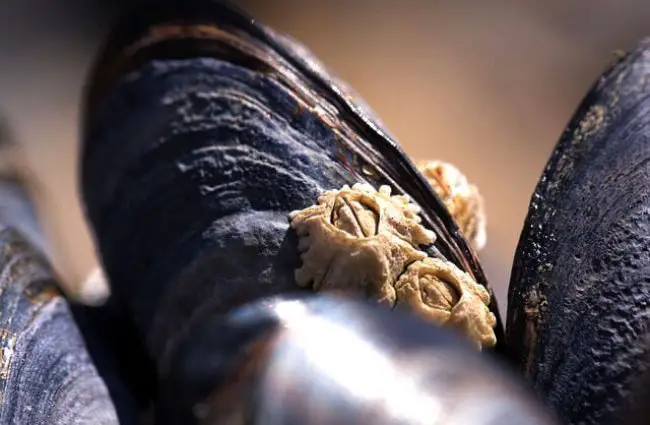
Unveiling the Barnacle: A Crustacean in Disguise
Many people mistake barnacles for mollusks, perhaps due to their hard, shell-like exteriors. However, barnacles are unequivocally crustaceans, belonging to the subphylum Crustacea, making them relatives of crabs, lobsters, and shrimp. Their sessile, or stationary, adult lifestyle is a remarkable adaptation that sets them apart from most of their mobile kin.
The typical barnacle body is encased within a series of calcareous plates, which form a protective fortress. These plates can open at the top, revealing feathery appendages known as cirri, which are used for feeding. Barnacles are found globally, from the frigid polar seas to the warm tropics, demonstrating an incredible adaptability to diverse marine environments.
Where to Find These Coastal Clingers: Barnacle Habitats
Barnacles are masters of attachment, and their habitats reflect this ability. They are most commonly found in the intertidal zone, the area between high and low tide marks, where they endure cycles of submersion and exposure to air. This harsh environment demands resilience, and barnacles possess it in spades.
- Rocky Shores: The most iconic barnacle habitat, where they form dense colonies on rocks, often alongside mussels and limpets.
- Piers and Pilings: Man-made structures in coastal waters provide ample surface area for attachment.
- Ship Hulls: A notorious habitat, leading to the phenomenon of biofouling.
- Marine Animals: Some species are commensal, attaching to the skin of whales, sea turtles, and even manatees, hitching a ride across the oceans.
- Mangrove Roots and Estuaries: Certain species thrive in brackish waters and on the submerged roots of coastal vegetation.
For an animal lover aiming to find barnacles in the wild, the best strategy is to visit a rocky coastline during low tide. Look closely at the rocks, especially in tide pools and on the sides of boulders. Barnacles will appear as small, white or grey cone-shaped structures, often in clusters. Gooseneck barnacles, with their distinctive fleshy stalks, might be found in more exposed, wave-swept areas.
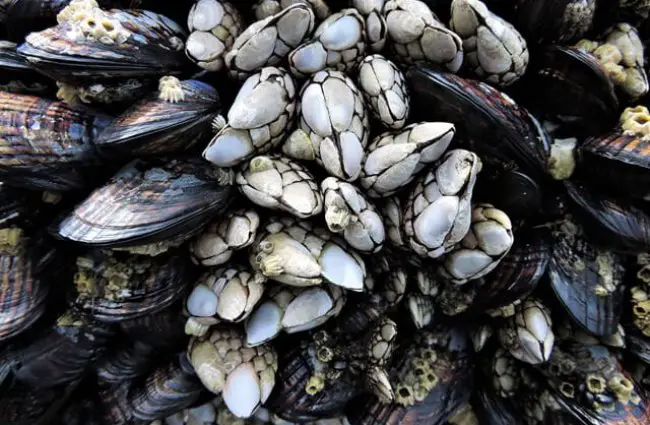
A Feast from the Tides: Barnacle Diet and Feeding
Barnacles are primarily filter feeders. Once submerged, their protective plates open, and their feathery cirri extend into the water, rhythmically sweeping to capture microscopic plankton and detritus. These cirri are highly efficient sieves, filtering out food particles from the surrounding water column. The precise structure and movement of the cirri can vary between species, adapted to different water flow conditions and food availability.
This feeding strategy is vital for nutrient cycling in coastal environments, as barnacles process vast quantities of water, removing suspended particles. Their diet consists mainly of:
- Phytoplankton (microscopic marine algae)
- Zooplankton (tiny marine animals, including larval stages of other invertebrates)
- Detritus (dead organic matter)

The Dance of Life: Barnacle Reproduction and Life Cycle
The reproductive strategies of barnacles are as intriguing as their sessile adult lives. Most barnacles are hermaphroditic, meaning each individual possesses both male and female reproductive organs. This adaptation is particularly useful for a stationary animal, as it increases the chances of successful reproduction when mates are scarce or distant.
Despite being hermaphrodites, barnacles typically engage in cross-fertilization. This involves a remarkable adaptation: the barnacle possesses one of the longest penises relative to body size in the animal kingdom. This elongated, extensible organ allows a barnacle to reach out and fertilize neighboring individuals, sometimes spanning a considerable distance within a crowded colony.
The reproductive process unfolds in several stages:
- Fertilization: Sperm is transferred from one barnacle to another. The eggs are then brooded within the mantle cavity of the parent.
- Nauplius Larvae: Once hatched, the eggs release free-swimming nauplius larvae. These microscopic larvae drift in the plankton, feeding and growing through several molts.
- Cyprid Larvae: After several nauplius stages, the larvae transform into a non-feeding cyprid stage. This stage is crucial for settlement. The cyprid larva actively searches for a suitable substrate to attach to, often detecting chemical cues from adult barnacles or biofilms.
- Settlement and Metamorphosis: Upon finding a suitable spot, the cyprid larva attaches head-first using specialized antennules and a powerful, fast-curing proteinaceous cement. It then undergoes a dramatic metamorphosis, shedding its larval form and developing the characteristic calcareous plates of an adult barnacle.
This complex life cycle, with its mobile larval stages and sessile adult form, highlights the evolutionary pressures that have shaped barnacle biology.
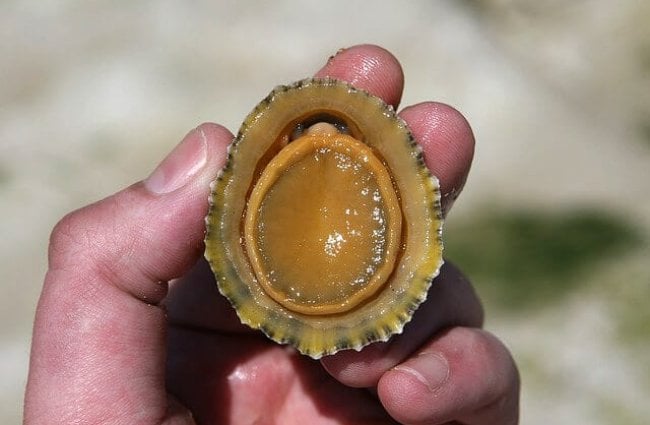
Echoes of the Past: Barnacle’s Evolutionary Journey
The evolutionary history of barnacles is a testament to adaptation and diversification. Their lineage can be traced back millions of years, with fossil evidence indicating their presence in ancient seas. As crustaceans, they share a common ancestor with more familiar mobile arthropods, but their unique sessile lifestyle represents a significant evolutionary divergence.
Early barnacles likely resembled their larval forms, free-swimming creatures. Over geological time, natural selection favored individuals that could attach to substrates, perhaps to exploit new food sources or avoid predation in the water column. The development of a robust, protective shell and a powerful adhesive cement were key innovations that allowed barnacles to conquer the challenging intertidal zone and other hard surfaces.
The diversity within barnacles, from the familiar acorn barnacles (Sessilia) to the stalked gooseneck barnacles (Pedunculata) and even parasitic forms, showcases a remarkable evolutionary radiation. Their success lies in their ability to adapt to a wide range of marine environments and lifestyles, cementing their place as one of the ocean’s most resilient inhabitants.

Barnacles in the Grand Scheme: Ecosystem Contributions and Interactions
Despite their small size, barnacles are significant contributors to marine ecosystems, interacting with a multitude of other organisms and influencing their environment in various ways.
Ecological Contributions:
- Bioindicators: Their presence and health can indicate the overall health of coastal waters, as they are sensitive to pollution and changes in water quality.
- Food Source: Barnacle larvae are a vital component of the plankton, providing food for a wide array of marine animals. Adult barnacles are prey for certain snails, crabs, and fish.
- Habitat Creation: Dense barnacle colonies create microhabitats, offering shelter and attachment sites for smaller invertebrates like limpets and periwinkles.
- Filter Feeders: By filtering vast amounts of water, they contribute to water clarity and nutrient cycling, removing suspended particles and potentially harmful microorganisms.
Interactions with Other Animals:
- Commensalism: Some barnacle species exhibit commensal relationships, attaching to whales, sea turtles, and other marine animals. The barnacle benefits from transport and access to food-rich waters without harming its host. The whale barnacle, for instance, is highly specialized for life on baleen whales.
- Competition: Barnacles often compete with other sessile organisms, such as mussels and sea anemones, for space on rocky shores.
- Predation: Certain species of predatory snails, like dogwhelks, can drill through barnacle shells to consume the soft tissues inside.
- Parasitism: Some barnacles, particularly those in the Rhizocephala order, are parasitic, living within the bodies of crabs and altering their host’s reproductive cycles.
Barnacles and Humanity: From Nuisance to Delicacy
The interaction between barnacles and humans is multifaceted, ranging from economic challenges to cultural appreciation.
Economic Impact: Biofouling
One of the most significant interactions is the phenomenon of biofouling. Barnacles readily attach to man-made structures in the ocean, particularly ship hulls, buoys, and underwater pipes. This attachment, known as biofouling, has substantial economic consequences:
- Increased Drag: Barnacles on ship hulls increase hydrodynamic drag, leading to higher fuel consumption and operational costs for vessels.
- Maintenance Costs: Regular cleaning and application of anti-fouling paints are necessary to mitigate barnacle growth, incurring significant expenses for the shipping industry.
- Infrastructure Damage: In severe cases, barnacle growth can impede the function of underwater sensors, pipes, and other marine infrastructure.
Research into environmentally friendly anti-fouling solutions is an active area of study, aiming to deter barnacle settlement without harming marine life.
Cultural and Culinary Connections
While often seen as a nuisance, barnacles hold a unique place in certain human cultures, particularly as a culinary delicacy.
- Percebes (Gooseneck Barnacles): In Spain and Portugal, gooseneck barnacles (Pollicipes pollicipes) are highly prized seafood, known as “percebes.” Harvesting these barnacles from treacherous, wave-battered rocks is a dangerous profession, adding to their mystique and cost. They are typically steamed and served simply, allowing their distinct, briny flavor to shine.
- Art and Literature: Barnacles have occasionally appeared in art and literature as symbols of persistence, attachment, or the relentless forces of nature.
Fascinating Facts About Barnacles
The world of barnacles is full of surprising details:
- Barnacles are the only sessile crustaceans.
- Their cement is one of the strongest natural adhesives known, capable of bonding underwater. Scientists are studying it for potential medical and industrial applications.
- Some barnacle species can live for over 10 years.
- They can survive out of water for extended periods by closing their opercular plates, trapping moisture inside.
- The largest barnacle species, Balanus nubilus, can grow up to 7 inches (18 cm) in diameter.
- Barnacles have compound eyes in their larval stages, but these are lost during metamorphosis to the adult form.
- The term “barnacle goose” comes from an old myth that these geese hatched from barnacles, as their breeding grounds were unknown to Europeans.
- Some parasitic barnacles can chemically castrate their crab hosts, even altering the host’s behavior to care for the barnacle’s offspring.
- Barnacles are sensitive to vibrations and can retract their cirri instantly when disturbed.
Navigating Barnacle Encounters: Practical Guidance
For the Hiker: Encountering Barnacles in the Wild
If you encounter barnacles during a coastal hike, remember these points:
- Observe, Do Not Disturb: Barnacles are living creatures. Admire them from a distance.
- Watch Your Step: Barnacle shells can be sharp. Avoid walking directly on dense colonies, as this can injure both you and the barnacles.
- Respect Their Habitat: Do not attempt to remove barnacles from rocks or other surfaces. They are firmly attached, and trying to dislodge them will likely harm them.
- Tide Pool Etiquette: If exploring tide pools, step carefully and avoid disturbing the water or moving rocks unnecessarily.
For the Zookeeper: Caring for Barnacles in Captivity
While not common aquarium inhabitants, caring for barnacles in a captive environment, perhaps for research or educational purposes, requires specific attention to their unique needs.
Tasks to Perform:
- Water Quality Maintenance: Provide pristine marine water with appropriate salinity (typically 30-35 ppt) and temperature ranges specific to the species. Regular water changes and robust filtration are essential.
- Substrate Provision: Offer suitable, stable surfaces for attachment, such as rocks, shells, or inert plastic. Ensure these are free of contaminants.
- Dietary Management: As filter feeders, barnacles require a constant supply of microscopic plankton. This can be achieved through regular additions of cultured phytoplankton and zooplankton, or by maintaining a healthy live plankton culture within the system.
- Water Flow: Mimic natural wave action or currents with gentle water circulation to facilitate feeding and gas exchange.
- Monitoring: Regularly observe barnacles for signs of stress, such as closed opercula for extended periods when submerged, lack of cirral activity, or detachment.
- Cleaning: Carefully clean the tank walls and non-barnacle surfaces to prevent excessive algal growth, without disturbing the barnacles themselves.
What to Avoid:
- Sudden Environmental Changes: Drastic shifts in salinity, temperature, or pH can be fatal.
- Rough Handling: Never attempt to forcibly remove or scrape barnacles from their attached surfaces.
- Contaminants: Avoid introducing any chemicals, medications, or pollutants into the water that are not specifically designed for marine invertebrates.
- Incompatible Tank Mates: Do not house barnacles with predatory snails, crabs, or fish that might consume them.
- Starvation: Inadequate or inconsistent feeding will lead to their decline.
Conclusion: The Enduring Legacy of the Barnacle
From their humble beginnings as free-swimming larvae to their tenacious adult lives, barnacles are a testament to the power of adaptation in the marine world. They are not just passive residents of our coastlines but active participants in complex ecological webs, influencing everything from water quality to the global shipping industry. Their unique biology, from their powerful cement to their remarkable reproductive strategies, continues to inspire scientific inquiry and offers valuable lessons in resilience and survival.
Next time you visit the coast, take a moment to appreciate these tiny architects of the intertidal zone. Their story is a compelling chapter in the grand narrative of life on Earth, reminding us that even the smallest creatures can hold the greatest wonders.

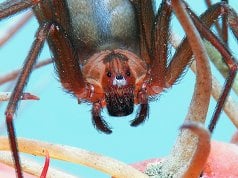
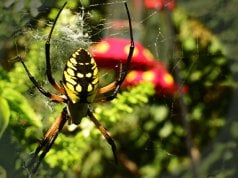



![Red Angus Closeup of a beautiful Red Angus cowPhoto by: U.S. Department of Agriculture [pubic domain]https://creativecommons.org/licenses/by/2.0/](https://animals.net/wp-content/uploads/2020/03/Red-Angus-4-100x75.jpg)

